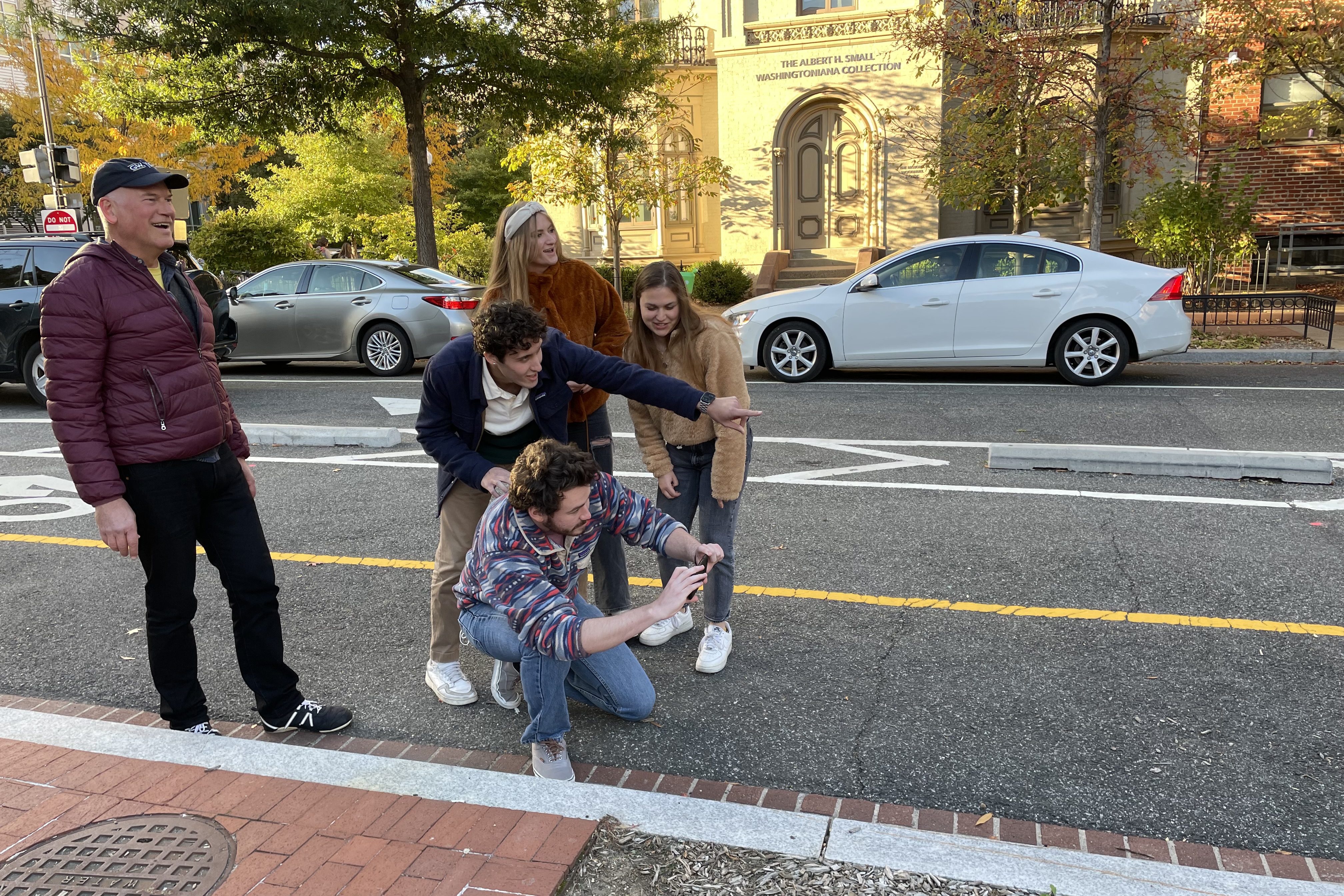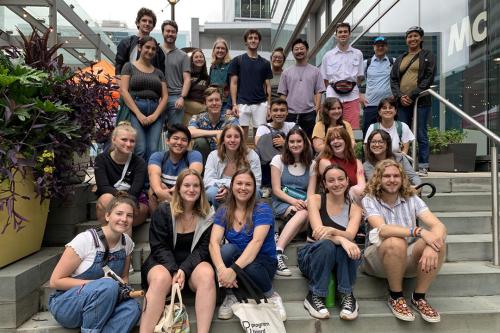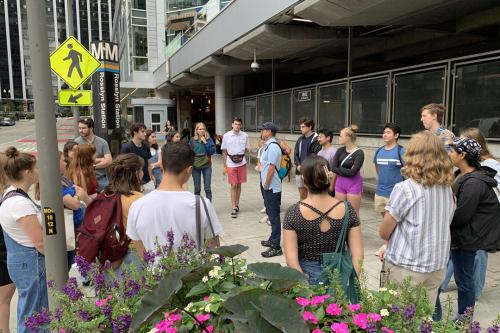By John DiConsiglio
When David Rain, associate professor of geography and international affairs and chair of the Geography Department at George Washington University’s Columbian College of Arts and Sciences, convenes his Geography Pro Seminar, his students are as likely to be found in the streets of Washington, D.C., as in a campus classroom. And that’s exactly how Rain planned it.
His senior capstone course combines seminar-style discussion with real-world exposure to geography challenges. The 28 students in his class are taking on the role of professional urban geographers—city planners, GIS coordinators, outreach specialists—as they investigate the rising demands on D.C. curbsides.
Spurred partly by the COVID-19 pandemic, curbs have become busier than ever, with competing needs from loading zones and bus stops to e-scooters and outdoor restaurant seating. Rain’s students, all geography majors, are spreading out through District neighborhoods—to bike lanes on G Street, parking ramps in Navy Yard and electric vehicle charging stations in Logan Circle—collecting data on how the city can make better use of its curbs. Their final reports may inform city policy for stakeholders like the D.C. Department of Transportation (DDOT).
“This is a real-world impact class,” Rain said. “It’s a chance for students to step out into the field—which, in this case, is the street.”
For the last few years, Rain explained, cities from Paris to Omaha have asked their streets and sidewalks to do more than handle traffic. While DDOT officially oversees curb usage, the agency is balancing the needs of city stakeholders like shop owners, motorists, pedestrians and bikers—all while complying with accessibility requirements and managing sustainability concerns.
“The curbside is sort of the interface between public and private,” Rain said. “The streets are public. The buildings are private. And there are all these competing interests and different users who want something from the sidewalks and curbs.”
Meanwhile, cities have turned to geographers—like urban planners and geospatial experts—to design flexible systems that meet the changing needs of their streets. For Rain, that trend makes curbs the perfect place to teach students about how an urban geographer works. His class partners with Larry Marcus, a D.C. transportation planner and affiliated faculty member, who helps introduce students to city government contacts. Rain is also working with Canadian software company IBI, which is providing complementary access to its curbside analysis software.
Splitting into five teams, the students spread out across the D.C.-area to collect data, conduct surveys and advise city agencies and stakeholders on best practice solutions. Allison Abrams’ team, for example, is working with DDOT on a framework to expand Americans with Disabilities Act-compliant parking. “Our work may be utilized to justify and install more accessible parking,” Abrams said. “I have never worked on a project that could actually affect planning policy.”
Senior Paul Faucher’s team is conducting a study for the Fairfax County Department of Transportation that aims to make Tysons Corner, Virginia, more pedestrian friendly. “This project is a great representation of what geography can do,” he said. “An analysis of geospatial data, stakeholders’ needs and policy context can transform Tysons into a more livable city.”
And senior Kai Hall said his project—helping the National Association of City Transportation Officials design streets for new technologies like autonomous vehicles—was partly inspired by his childhood in Tokyo, where transportation options play a central role in people’s lives.
“I’m a strong believer that our built environment affects our happiness,” Hall said. “We can build our cities to make us feel happy by providing mobility options, a sense of community and good aesthetics.”
Meanwhile, Rain said the skills his students acquire—like teamwork and project completion—can apply to any career. “They collaborate with their peers, they have deliverables, they have timelines,” he said. His goal is for seniors to leave his class thinking less like students and more like professionals. “Capstone courses often prepare students for the job market,” Rain said. “I hope this class helps them think about what they want to do after GW.”




